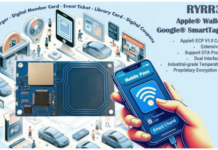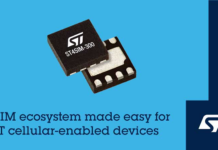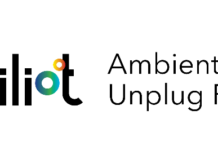
A smart home is an application of the Internet of things (IoT) that enables occupants to monitor, control conveniently, and oversee their home activities from any location.The primary aims of a smart home are safety, such as detecting harmful gases, fire or home intruders, convenience through remote monitoring and control of appliances and the physical environment, and reduction in energy and water consumption.
The first generation of smart homes had little to do with intelligence and was more about remote control and automation. A decade ago, a futuristic space where you could operate blinders from your smartphone or teach your thermostat to remember what temperature you prefer was enough to call it a smart home. Today, a smart home lives up to the consumer’s expectations and sometimes even exceeds them. Using sensors, devices, appliances and the whole spaces in your house constantly collect data on how you use them. They learn about your habits and determine consumption patterns using complex algorithms. These insights then help personalize your experience at a granular level.
Benefits of Internet of Things for smart home
Monitoring and control: Users can remotely switch on and off our appliances, but also control the full range of functionality on mobile or web applications. For example, smart LG fridges allow users to preorder extra ice production when they are still in target buying stuff for the party or check the expiration dates on the products to help users to optimize their shopping list. More importantly, smart systems give users a previously unavailable picture of how things work in their households. Connected devices collect data, process it and output meaningful insights on user’s app’s dashboards. Thus, how users can monitor, for example, how much electricity each device uses, calculate spending on utilities in real time, track humidity and other air quality conditions in your space, etc.
Environmental impact: Optimizing the use of resources, not only do reduce usersspending, but also decrease the carbon footprint. In fact, Internet of Things is already the driving force of green energy initiative.From autonomous LED lighting, power consumption and waste management systems to infrastructure solutions like PV systems and IoT and smart grid for households, connected technology allows everyone to go green, decrease carbon emissions and cut down on pollution. The range of IoT based home automation ideas in this sector is constantly growing.
Improved comfort: IoT based smart home automation often requires the use of intelligent algorithms that give household devices a certain level of autonomy and provide them with situational decision-making capabilities. Thus, a smart fridge can decide to reorder groceries online, and window blinders adjust to the daylight change and let just as much natural light to make the residents feel comfortable. As a result, this level of home automation makes users lives easier and still leaves the main control in their hands.
Enhanced security: Enhanced security is a smart home benefit early adopters favor the most. However, smart locks and surveillance cameras are not the only tools to improve the security of households. Today, monitoring systems for households are able to detect power surges, recognize leakages using water or gas sensors, warn about dangerous air pollution and send timely notifications to prevent complications or even a catastrophe.
Examples of smart home technologies and devices: This market is incredibly broad and diverse. Some producers focus on improving a specific part of the household environment, for example, temperature regulation. Others build complete hubs for a smart home that include many touchpoints, connect with other smart devices, for example, Amazon Alexa or Google Home assistants. Here are some examples from both categories:
Sensor Strips: This is a good example of one-size-fits-all connected tools for multiple purposes. Magnetic Strips with different sensors that turn any home space or device into a smart one. Users just need to attach the Strip to an object in their home—a door, window, floor, etc. The sensors will then report if the backdoor is open, notify about the leakages or identify the unusual activity of the windows.
Smart locks: Smart locks were one of the first connected devices adopted at a wide scale. These smart locks have everything—outstanding security features, a sleek app for users, plenty of features, easy access (remote via WiFi and local via Bluetooth) and integration with the most popular virtual assistants (Alexa, Siri, Google Home).
Power consumption telemetry: This system allows household residents to remotely control the sockets in their homes, track power consumption and calculate spending on electricity in real time. Utility companies, in turn, get firsthand insights on the way households use electricity, identify trends and offer demand-based pricing using this information.
Solar power surfaces: Sunpartner Technologies has been producing smart surfaces for years. Originally, this is smart glass able to collect solar power and convert it into useful energy for the buildings. Today, these surfaces can substitute traditional windows, doors, rooftops, even the tops of consumer devices and appliances to convert them into green, self-charging objects that operate off-grid. Some of the best home automation ideas are still to be discovered. However, the market is already bursting with incredible solutions. Here are some of them:
Autonomous house: This category includes both the interior and exterior objects. It covers everything in and around the house, from smart self-tinting windows like Halio to Dyson’s connected air monitor and purifier, which sensors identify particles and gases in real time and purifies the air on demand.
Autonomous security: Here come the whole families of products from the old-timers in the market — Ring, Nest, August, Schlage. This category includes smart locks, doorbells, surveillance systems as well as individual contact sensors for doors and windows which can detect unauthorized entrance, for example, strips from Sensative.
Autonomous appliances: This is a diverse category with some of the best home automation technology examples. Here you can find a wide range of kitchen appliances — refrigerators like Samsung Family Hub, smart ovens and dishwashers, entertainment hubs — TVs and smart speakers, as well as cleaning devices – here comes Roomba and the like.
As ESSCI Skilling body in the domain of Electronics we have full range of QPs for IoT Domain from Embedded hardware design to Embedded full stack IoT Analyst Engineer to skill the workforce to match the future industry requirements.


















